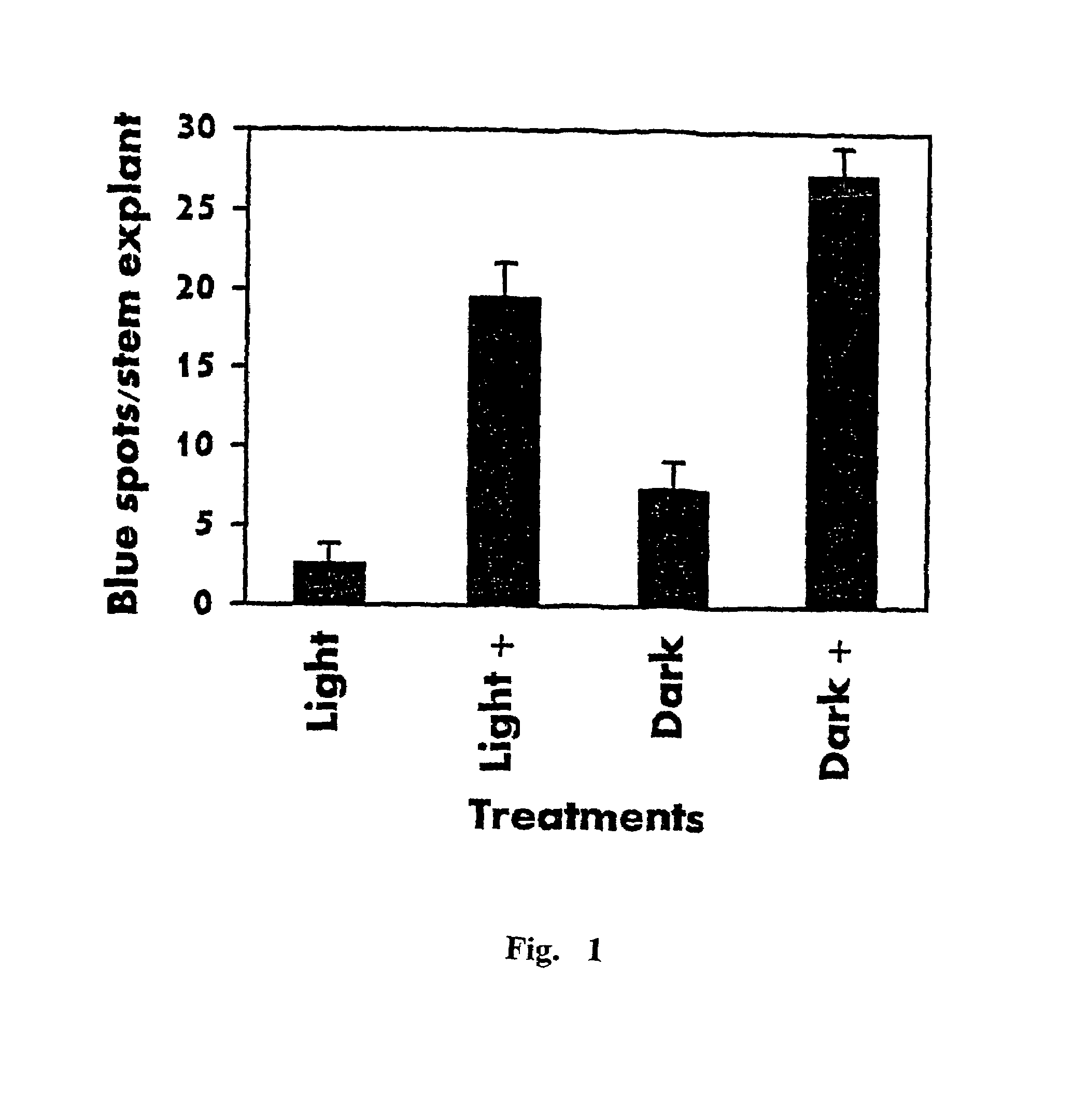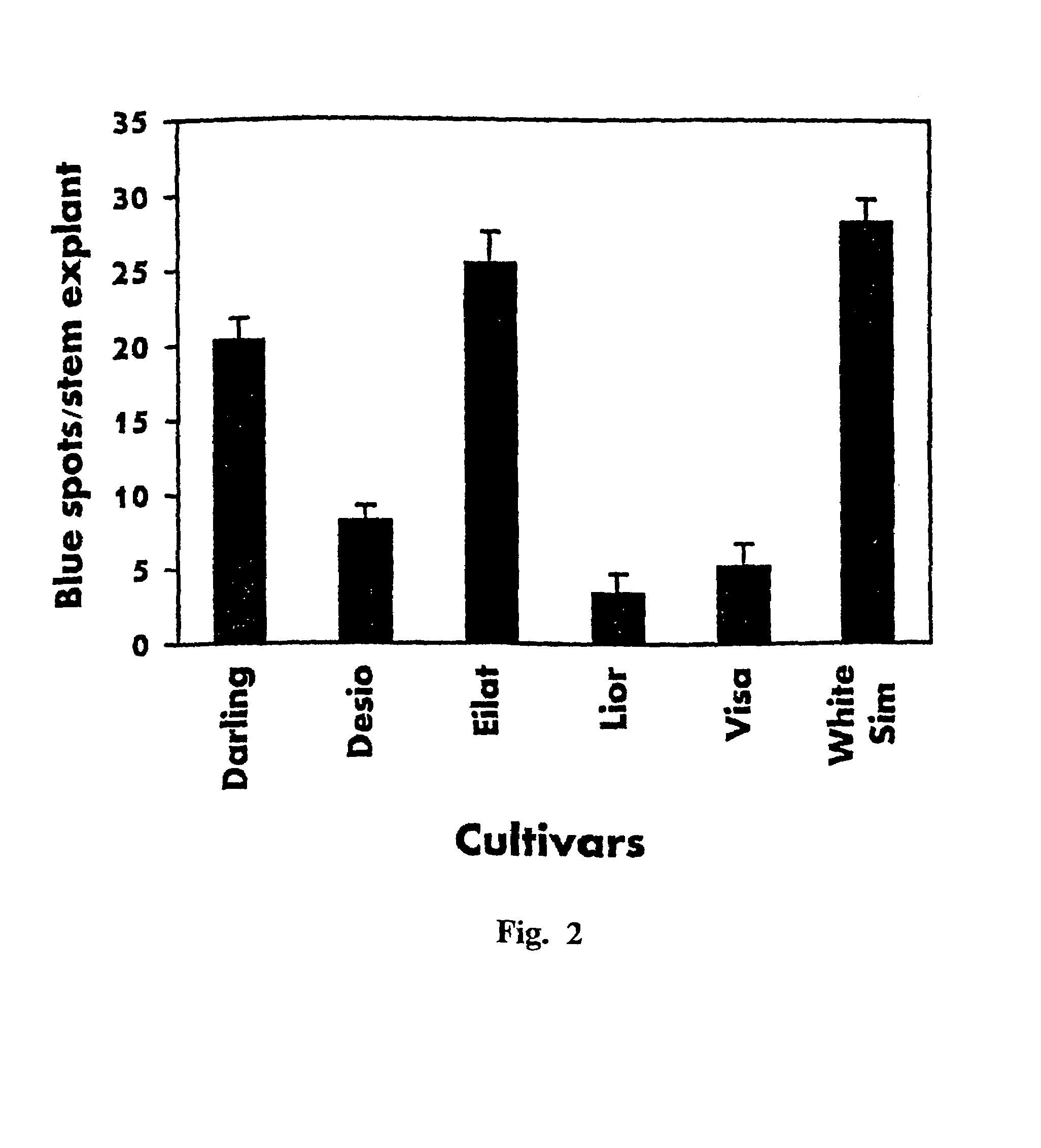Transgenic plants and method for transforming carnations
a carnation plant and transgenic technology, applied in the field of carnation plant transformation and novel transgenic plants, can solve the problems of limited cross-breeding between related species, complicated and limited control breeding, and detriment to the health of the plant, so as to improve the rooting ability, increase the breakage and development of the axillary bud, and increase the number of stem cuttings
- Summary
- Abstract
- Description
- Claims
- Application Information
AI Technical Summary
Benefits of technology
Problems solved by technology
Method used
Image
Examples
Embodiment Construction
I. Method of Carnation Transformation
A. Materials and Methods
1. Plant Material
[0074]Carnation plants were grown under standard greenhouse conditions. The experiments described below were carried out using the carnation species Dianthus caryophyllus L. However, it is to be understood that this is only an exemplary species, and this aspect of the invention applies to all species of the Dianthus genus. Cultivars White Sim, Eilat, Darling, Visa and Lior were grown at the Faculty of Agriculture (The Hebrew University of Jerusalem, Israel) and Shemi Ltd. (Shdema, Israel), and cultivar Desio was received from Mizpor Ltd. (Tquma, Israel). Cultivars White Sim, Desio and Visa belong to the standard category while cv. Eilat, Darling and Lior belong to the spray category. Stem cuttings with six or eight fully mature leaves (not counting the apical leaves which were not fully expanded), harvested from greenhouse-grown plants and stored for up to 1 month at 4° C., were used to prepare stem explan...
PUM
| Property | Measurement | Unit |
|---|---|---|
| pressure | aaaaa | aaaaa |
| distance | aaaaa | aaaaa |
| pH | aaaaa | aaaaa |
Abstract
Description
Claims
Application Information
 Login to View More
Login to View More - R&D
- Intellectual Property
- Life Sciences
- Materials
- Tech Scout
- Unparalleled Data Quality
- Higher Quality Content
- 60% Fewer Hallucinations
Browse by: Latest US Patents, China's latest patents, Technical Efficacy Thesaurus, Application Domain, Technology Topic, Popular Technical Reports.
© 2025 PatSnap. All rights reserved.Legal|Privacy policy|Modern Slavery Act Transparency Statement|Sitemap|About US| Contact US: help@patsnap.com



